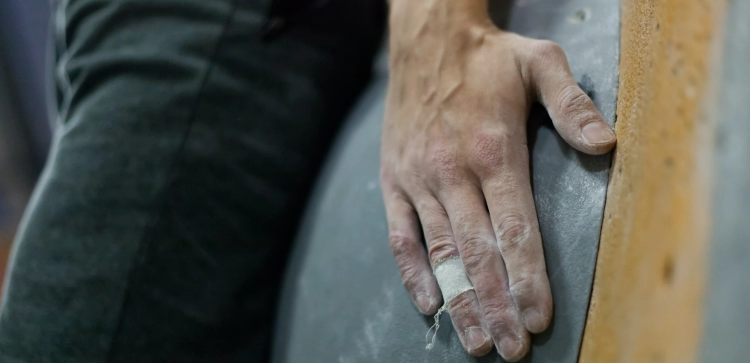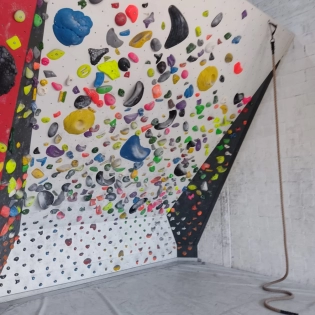Building Finger Strength For Challenging Holds

As climbers, our fingers are one of our most valuable tools, gripping onto holds of all shapes and sizes. Whether it's a tiny crimp or a sloping pinch, having strong fingers is a key element in gripping those challenging holds. So, how do you build that finger strength to tackle the toughest climbs?
It's not just about muscles, your tendons also need strengthening
To start this off, we should clarify that finger strength does not only include muscles, it also includes your tendons.
One of the most common climbing injuries is a pulley injury, and this is even more common with beginner climbers who try to train their fingers to get stronger quickly. The problem with trying to get stronger quickly is that while your muscles can handle the load, your pulleys cannot. They require more time to strengthen and to get used to the heavy load of pulling your body weight on small holds.
Not acknowledging this can lead to serious overtraining and injuries, without even realizing you are overtraining until your fingers are sore and in pain.
So while it may be very tempting to train your fingers, be patient with finger strength, and don't rush the process. Your tendons will take longer to adapt to climbing than your muscles, and rushing it will just lead to problems.
Building strength through climbing
Before getting into the actual training options for finger strength, it's important to clarify that fingers, much like the rest of the muscles utilized in climbing, will get stronger naturally just by climbing, without any additional training.
This is true, especially for beginner climbers who have never used these muscles in such a way before. It's common to get naturally stronger fingers throughout the first year of climbing, in which case it is recommended by most trainers and experts to not specifically train fingers. Training your fingers in addition to climbing can very easily lead to overtraining, resulting in injuries that will leave you out of the gym and off the wall for quite a while.
Hangboards Are Your Friends
If you've spent any time in a climbing gym, you've probably heard of or seen hangboards. These unassuming pieces of equipment can work wonders for your finger strength. Hang onto various holds on the board, gradually increasing the time and weight you add. It's like a mini workout for your fingers right at home or at the gym.
Be cautious, though, that if you are a beginner climber, hangboarding is usually not something that you would want to do as it could very easily lead to injuries due to overtraining. As mentioned earlier in this article, beginner climbers tend to get stronger throughout the first year just by climbing. Adding specific finger training to this could just be too much and lead to overloading your tendons and muscles.
Campus Board Climbing
This one is for the more advanced climbers. The campus board is a set of rungs or holds arranged vertically. It includes dynamic, explosive movements. You move from rung to rung without using your feet. This exercise can seriously boost your finger strength and overall climbing power.
To make things even more difficult, try going up and down the rungs in a slow and controlled manner. This helps train not just your fingers, but also your lock-off strength.
Deadhangs and Repeaters
Deadhangs are simple yet effective. Find a good edge or hold, hang from it with your body relaxed, and stay there for as long as you can. Repeaters involve hanging for shorter intervals but with added weight. Both techniques help you develop finger strength over time.
Don't Forget About Antagonist Training
Balanced strength is essential in climbing. While you work on your finger strength, don't neglect antagonist muscles. Strengthening your wrists and forearms can improve your overall climbing performance and prevent injuries.
Patience and Consistency
Building finger strength takes time. Be patient and consistent with your training. Overdoing it can lead to injuries. Gradually increase the intensity and duration of your finger-strengthening exercises as your fingers adapt.
Conclusion
Having strong fingers is important in climbing, but, it's not everything. Strength alone won't get you far, not if you don't have a proper climbing technique to go along with it.
Take things slowly in the beginning, and let your fingers adapt to climbing and training, especially if you are a beginner.
Once you feel more comfortable, start introducing more specific finger training into your training schedule, and progress patiently.







